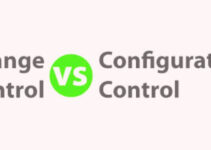Agile organizations are business enterprises that have the capability to proactively respond to changes and adapt to the changing business environment. Agile organizational structure is different from that of traditional companies. They have a decentralized organizational structure with multiple teams working on various projects. It helps them to quickly decide and achieve flexibility when while dealing with challenges and exploiting opportunities. Today, we’ll discuss the advantages and disadvantages of agile organization; factors to decide about agile companies; and the pros and cons of agile change management.
Factors to Decide Agile Organization is the Right Fit for You
- An agile strategic approach is best for small companies; it is highly difficult to manage large-scale companies
- Complicated projects require upfront planning, and an agile strategic approach is not the right method for you
- If the project is flexible and keeps changing, then agile is also not a good option
- Agile doesn’t work in hierarchical and top-to-bottom organizations
- Collaborative and coordinated working environment, agile is the best option
Advantages of Agile Organization
Let’s discuss the main benefits and advantages of agile organization in advantages and disadvantages of agile organization are as follows;
High Flexibility
Agile organizations are highly flexible. It is due to the fact that they have small and cross-functional teams and they could quickly respond and adapt to the changes in the marketplace or customer needs. The flexibility would help you to quickly respond to challenges and opportunities; and turn quickly if the products aren’t working as planned. The repetitive nature of the agile approach allows you to quickly implement customer feedback into the project development efforts.
Quick Turnaround
The agile approach helps businesses and companies to quickly launch products into the market than their traditional counterparts. The team could speedily finish the developmental tasks and move on to the next project task without waiting for approval from the top management.
Self Management
Usually, traditional organizations follow a clear authority and chain of command. The agile teams are well organized and they follow the self-management protocols. It requires them to encourage the team members to share their ideas and take initiative. However, agile teams communicate openly and it leads them to become creative and quickly make decisions. Self-organization could help you to build trust and confidence with the team members.
Regular Feedback
Agile teams and organizations collect their feedback from various stakeholders regularly and they are more open towards it. They have standup meetings where they share the type of project they’re working on and recognize the barriers to growth and progress. It offers them an opportunity to ask questions and share their feedback. As a result, it leads them towards better and improved results.
Employee Satisfaction
The customer satisfaction level is higher in agile projects. The agile teams work closely with customers’ feedback and make the required changes based on their demands. Often, the coordination leads them to produce better products for customers. The agile strategic approach focuses on an open and collaborative environment and it improves the customer and employee satisfaction level.
Visible Progress
The key benefit of agile companies is that they make their progress visible. It focuses on completing the project in small stages; the agile teams could quickly track the progress of the projects and make necessary changes. Often, it begins from scratch and makes gradual changes, and it is a great advantage over traditional approaches.
Low Risk and High Quality
The agile approach reduces the risk factors and improves the quality of the project. It allows you to complete and finish the project in small stages; agile teams can track the progress of the project and make necessary changes. However, the open communication and collaborative approach help them to recognize the problem in the early stages and stop the problem before it becomes big.
Disadvantages of Agile Organization
Let’s discuss the main challenges and disadvantages of agile organization in advantages and disadvantages of agile organization are as follows;
Not Suitable for Every Project
Agile organizational structure is not suitable for various types of organizations and projects. For instance, agile organizations have a flat structure with limited hierarchy and chain of command. It is difficult for their organizations because it is difficult to maintain control over them. Most importantly, agile companies follow a decentralized structure; it allows them to make decisions by the team members rather than the top management.
Require Collaboration
Agile teams are heavily reliant on open communication and collaboration among the team members. It is highly difficult to build such teams, especially when the team members are in different locations. They have limited face-to-face interaction; when they have to travel regularly, then it becomes difficult for them to collaborate with teams in multiple time zones. They can’t develop a common comprehension when the team members have different levels of expertise.
Not Understood
It is difficult to get approval from the top management and stakeholders for the implementation of a strategic approach. Agile is a radical strategic approach to traditional project management; it is highly difficult for them to comprehend the new concept.
Training and Discipline
The team members need a lot of training to fully comprehend and execute the agile concept. Many businesses and companies are implementing the agile strategic approach because their team would require training to work in its framework.
Difficult to Measure Progress
It is highly difficult to measure the growth and progress of the agile companies. It is due to the fact that the project is completed in small stages, and you can’t track their performance while making small changes. On the other hand, the traditional approach starts from scratch if you need to make any changes.
Long Term Planning
Agile companies have the capability to adapt to the changes and quickly respond to market demands. The drawback of this agile approach is that it doesn’t focus on long-term planning. Usually, agile companies focus on here and now time, and they don’t have time to think about the future and long term.
Low Customer Focus
The other drawback of the agile approach is that it has a limited focus on customers. When the company is constantly changing its direction relevant to the needs and requirements of customers, then it is difficult for them to maintain a proper and cohesive brand identity.
Conclusion: Advantages and Disadvantages of Agile Organization |Advantages and Disadvantages of Agile Management |Pros and Cons of Agile Change Management
After an in-depth study of the advantages and disadvantages of agile organization; we have realized that agile management is suitable for small companies. If you are learning about the pros and cons of agile change management; then you should keep in mind their benefits and challenges separately.
Ahsan is an accomplished researcher and has a deep insight in worldly life affairs. He goes Live 3 days a week on various social media platforms. Other than research writing, he’s a very interesting person.


